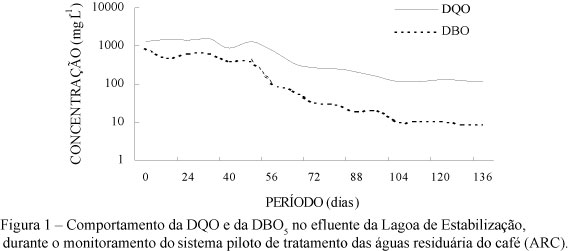Wet coffee processing, besides its efficiency in getting better coffee quality, also minimizes considerably drying costs, and moreover reduces the space due to the ground-flour spreading seeds. However, this type of processing produces large quantities of wastewater, which must be treated before being discharged into the sewage system. The main objective of this research was to monitor the stabilization pond, as part of a pilot system, and therefore, to evaluate its efficiency concerning the organic loading removal and also to develop a model that can describe the auto-purification. In this research it was used 300.200 liters of coffee fruits, Coffea arabica L., specie, in the wet processing. The organic loading rate applied was 136 kgCOD d-1.The performance of this unit was monitored through chemical and physical-chemical analysis, and the mathematical modeling was developed based on the hydric balance, on the theoretical COD estimation and on the actual analysis of COD realized. The stabilization pond effluent presented averages of initial and final COD concentration of 7.100 mg L-1 and 100 mg L-1, respectively. It was found that the stabilization pond was responsible for removing 80% of the total organic matter present in the affluent. The adjusted model developed showed a satisfactory regression coefficient (r² = 0,8015).
Mathematical model; effluent treatment; coffee post-harvest; stabilization pond













